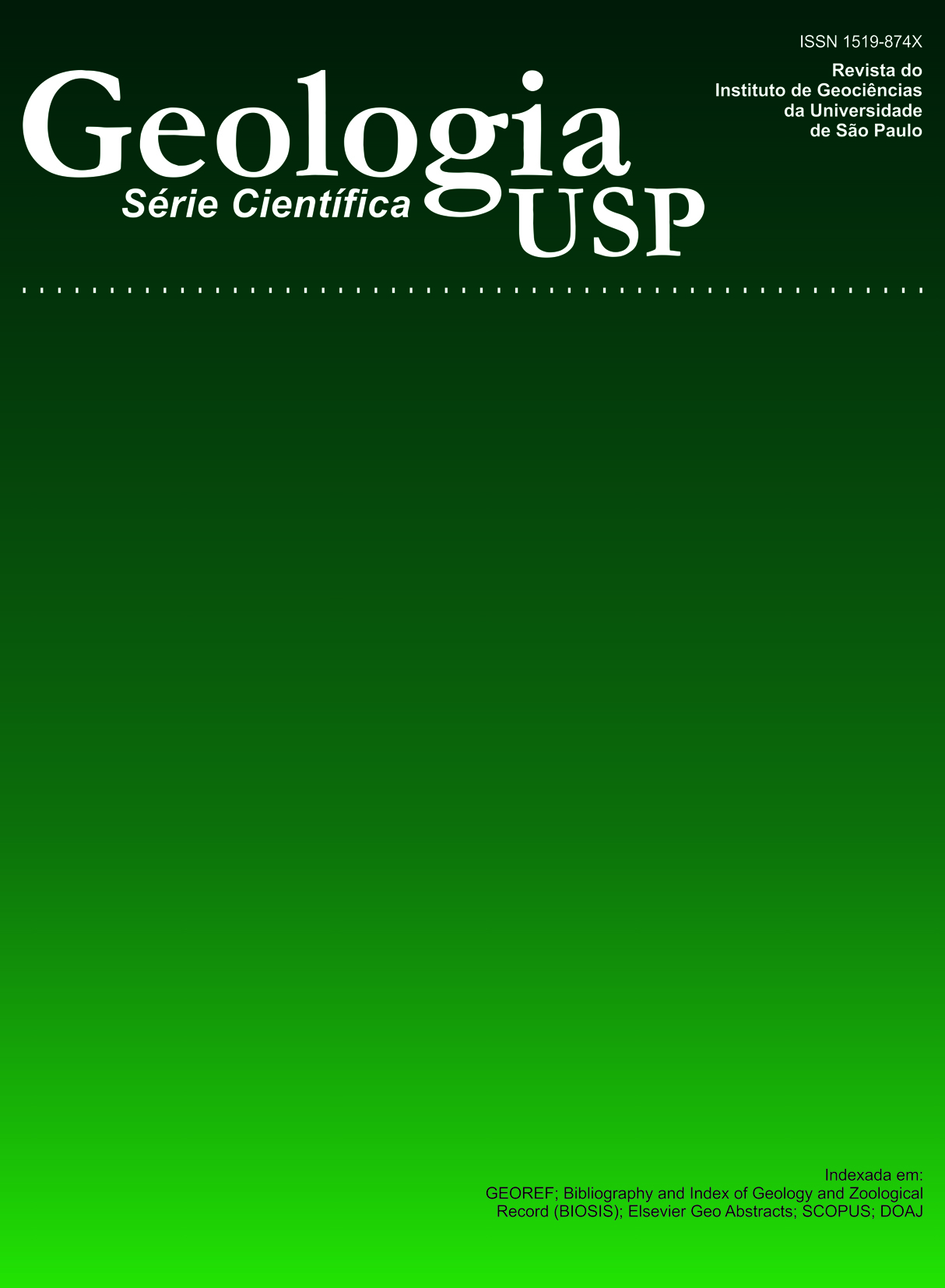Othonella araguaiana (Bivalvia, Megadesmidae) from the Corumbataí Formation (Midlle Permian), Eastern Margin of the Paraná Basin: systematic, evolutionary and biostratigraphic significances
DOI:
https://doi.org/10.5327/Z1519-874X2010000200004Keywords:
Bivalvia, Megadesmidae, Permian, Paraná Basin, Corumbataí Formation, SystematicsAbstract
In this study, the occurrence of Othonella araguaiana Mendes, a rare bivalve species is reported for the first time in the Pinzonella illusa biozone, Middle Permian Corumbataí Formation, in the State of São Paulo. This species was originally described in coeval rocks of the Estrada Nova Formation (= Corumbataí) from the Alto Araguaia and Alto Garças regions, State of Mato Grosso. The specimens of O. araguaiana were found in the base of a bioclastic sandstone bed, a proximal tempestite, in the middle of the Corumbataí Formation, in the city of Rio Claro, São Paulo State. The silicified shells and internal molds are well preserved, showing impressions of muscle scars and other internal anatomic characters (e.g., hinge), never illustrated by previous authors. In his original description, Mendes (1963) called attention to the similarity between O. araguaiana and Terraia aequilateralis, a common veneroid of the Corumbataí Formation. Conversely, Runnegar and Newell (1971) suggested that O. araguaiana belongs to Megadesmidae, being a junior synonym of Plesiocyprinella carinata (the commonest megadesmid of the Passa Dois Group). Our study indicates that O. araguaiana is indeed a megadesmid, but is distinct from the P. carinata. The new occurrence of O. araguaiana demonstrates that a) the paleobiogeographic distribution of this species is wider than previously thought (that it was restricted to the northern part of Paraná Basin, Mato Grosso State); b) the molluscan fauna of the Corumbataí Formation (P. illusa biozone) in the State of São Paulo is more diverse and dominated by megadesmids; and c) the composition of the molluscan fauna of the Corumbataí Formation in Alto Garças, State of Mato Grosso, is essentially the same as that of the P. illusa biozone of the eastern margin of the Paraná Basin.Downloads
Download data is not yet available.
Downloads
Published
2010-07-01
Issue
Section
Articles
License
Authors who publish in this journal shall comply with the following terms:
- Authors keep their copyright and grant to Geologia USP: Série Científica the right of first publication, with the paper under the Creative Commons BY-NC-SA license (summary of the license: https://creativecommons.org/licenses/by-nc-sa/4.0 | full text of the license: https://creativecommons.org/licenses/by-nc-sa/4.0/legalcode) that allows the non-commercial sharing of the paper and granting the proper copyrights of the first publication in this journal.
- Authors are authorized to take additional contracts separately, for non-exclusive distribution of the version of the paper published in this journal (publish in institutional repository or as a book chapter), granting the proper copyrights of first publication in this journal.
- Authors are allowed and encouraged to publish and distribute their paper online (in institutional repositories or their personal page) at any point before or during the editorial process, since this can generate productive changes as well as increase the impact and citation of the published paper (See The effect of Open Access and downloads on citation impact).
How to Cite
Simões, M. G., Anelli, L. E., & David, J. M. (2010). Othonella araguaiana (Bivalvia, Megadesmidae) from the Corumbataí Formation (Midlle Permian), Eastern Margin of the Paraná Basin: systematic, evolutionary and biostratigraphic significances . Geologia USP. Série Científica, 10(2), 45-55. https://doi.org/10.5327/Z1519-874X2010000200004





